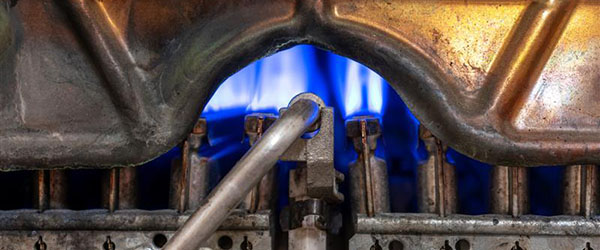
How to protect boilers in cold weather with regular inspections and maintenance
In most parts of the country, winter weather has struck. Icy roads, icy parking lots…there’s a lot to think about as a tribal business owner. Don’t forget your boiler system as well. Winter cold – especially freezing temperatures – can wreak havoc with your boiler systems. Here we’re providing tips on how to protect boilers in cold weather.
Not only is an annual inspection necessary, but it may be required by law, depending on your location. Additionally, it’s best to inspect again as cold weather sets in.
Safety precautions for boiler inspections
These safety tips are provided by Metalphoto of Cincinnati:
- Inspect with a partner or have an inspection attendant.
- Request that other boilers are not blown during the inspection.
- Ensure that all valves are turned off and locked out prior to inspection including fuel, blowdown, steam, chemical feed and feedwater valves.
- Check the temperature of the bare metal to ensure that the boiler is not too hot.
Perform regular inspections to protect boilers in cold weather
If you haven’t inspected your boiler recently, follow these steps:
Have the boiler serviced. This should be done annually by a certified engineer who will check all components, clean them, and review boiler room logs. These logs provide information on factors such as fuel consumption and flue gas temperature. They should be recorded on a daily or per-shift basis. This baseline data can then be compared against current readings to determine if the machinery is within safe operating parameters, or if trouble is brewing. If the boiler is older, consider having it serviced every few months.
Check the flame’s color. Daily look at the boiler’s flame – is it clear blue, the typical color of a gas flame? If it’s yellow or smoky looking, your boiler needs immediate attention.
Check your carbon monoxide detector. Your detector should be located near the boiler and tested monthly. If the boiler isn’t working properly, it can produce carbon monoxide – an odorless, tasteless, clear gas that can kill.
Keep an eye on levels. Daily check your pressure gauge and keep it topped off. Operating pressure, water levels, temperature and low-water cutoff should also be checked every day. Consult your owner’s manual for further instructions on maintaining pressure.
Check the boiler’s low water cutoff (LWCO). This LWCO is designed to alert the boiler that it lacks sufficient water to “fire.” When operating properly, it prevents the boiler’s burners from igniting until a safe water level has been restored. Particulates in the water can cause stuck valves and clogged LWCOs, which may impede their message to the boiler that the water level is below the minimum safe level.
Blow down daily. The boiler and water column need to be blown down daily; also inspect the feedwater pump’s operation. Check the feedwater pressure and temperature as well.
Look for other issues. Check flue gas temperature, gas pressure, oil pressure and temperature on a daily basis. Do you see soot accumulation, leaks or cracks – or hear clunking noises?
Maintenance and installation of the boiler may cause certain issues. For instance, steel-construction boilers can last 25-30 years when properly maintained. If not properly installed or maintained, it may spring a leak two-to-three years into its lifespan. Regardless if it’s cast-iron or steel, it’s recommended that once you see a leak, don’t just replace the tubes or pipes that are leaking right now. Replace them all.
Another common issue is articulate buildup or oxidation on the inside of fire tubes. If the system is receiving either too little or too much water, this can cause problems. Chemical water treatments can also be added for areas with hard water, or other water issues. While these treatments can help to reduce oxidation, they should only be performed by a qualified professional and as specified by the manufacturer.
Cast-iron boilers don’t generally need water treatment. In fact, water can potentially damage gaskets on some cast-iron models.
Related: The hard, cold facts of winter loss prevention
Additional winter preparation tips
To protect boilers in cold weather, pay special attention to the following three tips.
Bleed as needed. If the radiator is colder at the bottom than the top, it signifies that air is trapped in the system and should be released. If it’s not bled, this trapped air puts an extra strain on the boiler, wasting energy. To bleed the radiator, switch the heat off. Place the key in the bleed valve and turn a quarter of the way counterclockwise. Immediately you should hear air hissing out; when water starts to drip out of the bleed valve, you’re finished. Lock it back up and clean up any water drips.
Give the boiler room to breathe. The fuel burned in the boiler requires oxygen to burn. That oxygen comes from surrounding air. For that reason, all boiler rooms by code are required to have an unobstructed outside air source. However, cold temperatures can reduce air flow. If your boiler is located in a closet, don’t store other items in there that may restrict airflow. Boilers need adequate ventilation in winter – and in every season.
Watch out for extreme cold. When temperatures hit sub-zero, the external condensate pipe could freeze, causing the boiler to shut down as a safety measure. In particular, make sure that any supply or return lines that run near outer walls or through un-insulated / un-heated areas are properly insulated or protected with heat tracing to prevent them from freezing. This is especially important with return lines, as they are normally at a lower temperature than the supply lines to start with.
Related: How to keep employees safe from winter weather work hazards
Resources
The dangers of freezing water & boilers
Winter Operation of Steam and Hot Water Heating Boilers
Prepare your Boiler for Winter
High Pressure Boiler Inspection Procedures
